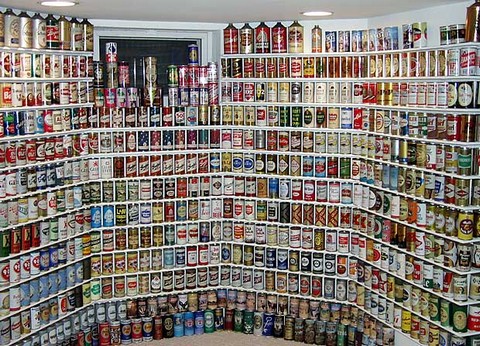Secrets of the human brain: Loss Aversion
December 11, 2008

Why do we throw good money after bad? Why do we hoard junk? Why do we keep the gym membership even though we don’t go?
The answer is loss aversion, a term introduced in 1979 by two Yale economists, Daniel Kahneman and Amos Tversky. The essence of their finding: losing £100 affects your level of happiness much more than winning £100. In other words, you feel losses more deeply than a gain of the same value. We hate losing what we have (or think that we have).
The concept won Daniel Kahneman a Nobel prize (which Tversky would have shared had he been alive) – but how can it be used? Mainly by tuning how aware you and your users are of your potential losses.
The Seinfeld Method
This trick captured the imagination of a lot of people after it was featured on Lifehacker. This is what Jerry Seinfeld told an aspiring comic when asked how he kept up the motivation to write.
“He told me to get a big wall calendar that has a whole year on one page and hang it on a prominent wall. The next step was to get a big red magic marker.
He said for each day that I do my task of writing, I get to put a big red X over that day. “After a few days you’ll have a chain. Just keep at it and the chain will grow longer every day. You’ll like seeing that chain, especially when you get a few weeks under your belt. Your only job next is to not break the chain.
“Don’t break the chain,” he said again for emphasis.”
This is a great example of loss aversion: the benefit of writing another joke seems small, but as you build up the chain you give yourself something to lose – and god do we hate to lose.
This has been applied all over: even as a way of tracking open source contributions http://calendaraboutnothing.com/.
Feel the pain
StickK uses another tool to even the balance: making you put your money where your mouth is.
“After signing up with stickK, you will be able to create a contract obliging you to achieve a specific goal within a particular time-frame. By creating a contract to meet one of your goals, you´re actually testing yourself and saying, “Hey, I can do this”. Not only are you challenging yourself, you´re also putting your reputation at stake. “
This is how it works: say you want to quit smoking, practice the guitar, etc… You go to www.stickk.com and set up a “Commitment Contract” setting out exactly what you will do, and set out a stake – it could be $10, $1000 or whatever you want. If you fail, the money is paid out to the charity of your choice. Simple.
The mechanics get quite neat. To stop StickK from giving away your hard earned cash you must report on your progress on the deadlines you’ve set up (e.g. I didn’t smoke this week). To stop you cheating, the report is then sent to a referee that you can nominate.
The site even has a special section for corporate accounts.
In its coverage of this, the Freakanomics blog linked to another nice little gadget in this line of thought – an alarm clock called SnuzNLuz that donates to your most hated charity (“Are you a butcher? Set your SnuzNLuz to donate to PETA”).
This is textbook loss aversion (the founders, Dean Karlan and Ian Ayres, are both Yale economists and researchers in this area). By getting you to focus on the potential losses they help you to do the right thing. More good coverage here.
Get others to feel it too
These two examples both show how you can use an awareness of loss aversion as a personal productivity aid, but it is much more fundamental than that. Anyone designing a business product or service should keep it in mind when trying to win over customers and give them something useful. More generally, creating a system or environment which minimizes loss aversion will make for better outcomes all around.
How can you make people treat losses with less emotion?
- One of the biggest examples of loss aversion is people failing to sell an investment when it’s worth less than they paid (“It’ll go back up I hope”). How can you design a system that makes it easier for people to get rid of the laggards in their portfolio (i.e. make it easier to set up and stick to stop losses)?
- Building a piece of software? You don’t have to keep every feature. How can you create an environment where a team chances removing unfocused or poorly-executed features at the risk of pissing off a small portion of users, rather than taking the certainty of leaving a mediocrity in.
- Turns out that people don’t go to the doctor because their worries about the seriousness of their illness outweighs the perceived benefit of treatment. How can you change this perception so the ill seek treatment? (from the blog of Nudge, a book by two more behavioural economists, one of whom, Thaler, contributed significantly to the discovery of loss aversion)
How can you make the threat of losses loom larger?
- The classic example of the gym membership. StickK puts a cash price on not going, but how can you make people internalise the damage to their health from not going? Same for smoking.
Tune what your users feel they already have and you will control what they have to lose. What have you got to lose?

